Asus ZenWiFi Pro XT12
Asus ZenWiFi Pro XT12: Two-minute review
There are full PC systems that are smaller than Asus’ ZenWiFi Pro XT12 nodes. These twin towers are packed with powerful components and a channelled-air cooling system that’s partnered with beefy heatsinks. The idea is to create an overpowered Wi-Fi 6 mesh (with a dedicated backhaul channel between nodes) that’s robust enough for SMBs and demanding prosumers.
First: performance. It utilises a 2.4GHz band and two 5GHz bands for a theoretical maximum throughput of 11,000Mbps. You can set which band acts as a dedicated backhaul link between the nodes or leave it (as we did) set on Auto. Past experience tells us that dedicated backhaul links make mesh Wi-Fi much faster. You can also use Ethernet to create the backhaul and free up one of the 5GHz bands.
We ran our usual tests from a Sydney weatherboard cottage. This involved setting the first node up in the middle room, next to the modem, and the secondary node two rooms away at the front of the house. We tested next to both nodes and 25m away in the back garden. Up close it scored 627Mbps, which is fast but still 100Mbps slower than other top Wi-Fi 6 rivals. Next to the secondary node, it scored 609Mbps – just a 3% drop-off and the fastest speed we’ve ever seen from a secondary node! Outside, at the bottom of the garden, however, this dropped to 46.6Mbps, which is still very respectable for a standalone router, but it’s beaten by mesh kits with a third node.
The 2GHz quad-core processor, 10 antennae and internal smarts are able to handle multiple, demanding and concurrent device connections much more robustly than equivalent consumer routers.
Other notable performance-related features include each node having a 2.5GbE WAN port, a 2.5GbE LAN port and two 1GbE LAN ports which can be aggregated for 2GbE. This will please people wanting to connect NAS boxes and such like.
Both towers look impressive with their unique design and glowing graphics. Setup is simple via the app, which is intuitive and offers excellent monitoring and management tools, including powerful QoS options and a useful Insight tab that offers advice regarding configuration. The app also enables you to access everything remotely. Power users and sysadmins will warm to the extensive features accessed via a desktop browser which are also fast to access.
Meanwhile, Asus’ AiProtection Pro (powered by Trend Micro) offers Intrusion Prevention System (IPS) security, WPA3, real-time malware blocking and the usual parental/user controls. Regularly updated lifetime protection is included. Users can also access a separate Instant Guard app to filter traffic via the router, for security, when browsing using public hotspots.
Other SMB-friendly features include using up to 12 separate SSIDs to segregate users, although the firewall access control used to manage these separate networks is rather basic. There’s also a built-in VPN server, the ability to block protocols like BitTorrent and Target Wake Time which enables networked devices to power-down and save electricity when not being used. Plus, it’s compatible with Alexa and Google Assistant.
Ultimately, all of the SMB boxes are ticked, but even though significant tinkering can be done under the hood, some power users and system admins will want more before they let it take charge of their business’ Wi-Fi.
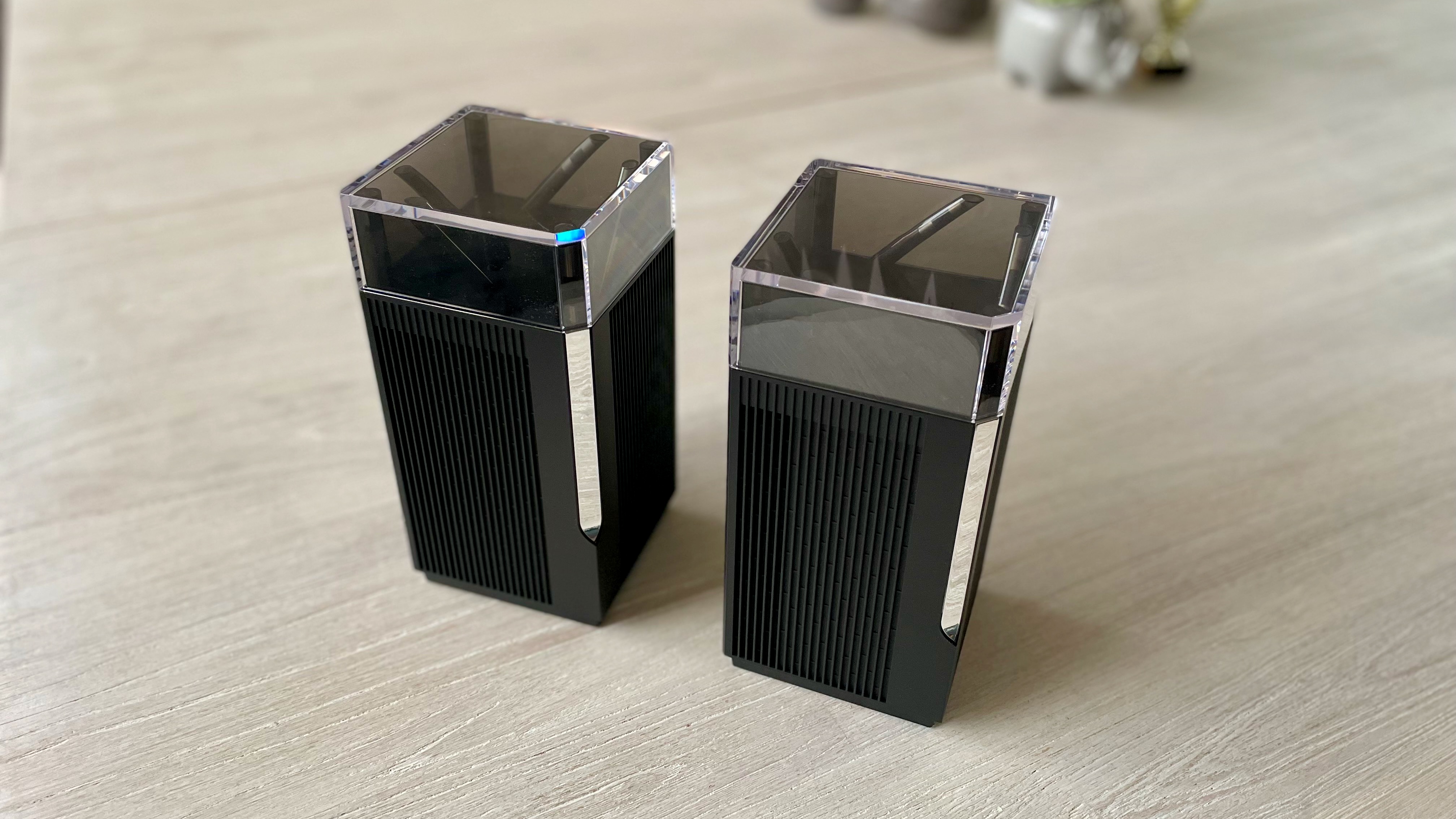
Asus ZenWiFi Pro XT12: Price & availability
- Retails for $800 / £699 / AU$1,499
- Available now
The Asus ZenWiFi Pro XT12 is available now in most major markets and costs a whopping $800 / £699 / AU$1,499. This makes it one of the most expensive Wi-Fi router/mesh kits available.
It’s in a relatively new market segment for prosumers and SMBs that was recently brought to the fore by Synology’s RT6600ax. The problem is that while the Synology is much uglier, it offers even more features, similarly impressive performance and costs (gulp) around one-third the price of the XT12, depending on where you are in the world.
The Synology is also designed to act as a mesh (with dedicated wired or wireless backhaul) when multiple units are connected, so you can buy two of those and still save significant money versus the Asus ZenWiFi Pro XT12's standard twin-pack.
Still, for many, the XT12 will be cheaper than a full, business-class Cisco Meraki deployment but, if you’re weighing up that as an option, don’t forget to factor-in on-going support costs as part of the total cost of ownership (aka TCO).
If both devices offer too much business-grade complexity, but you still like the performance elements, check out Asus’ excellent, consumer-friendly ZenWiFi XT8 mesh kits, which are 30% cheaper than the XT12 and still packed with features.
Value score: 3.5/5
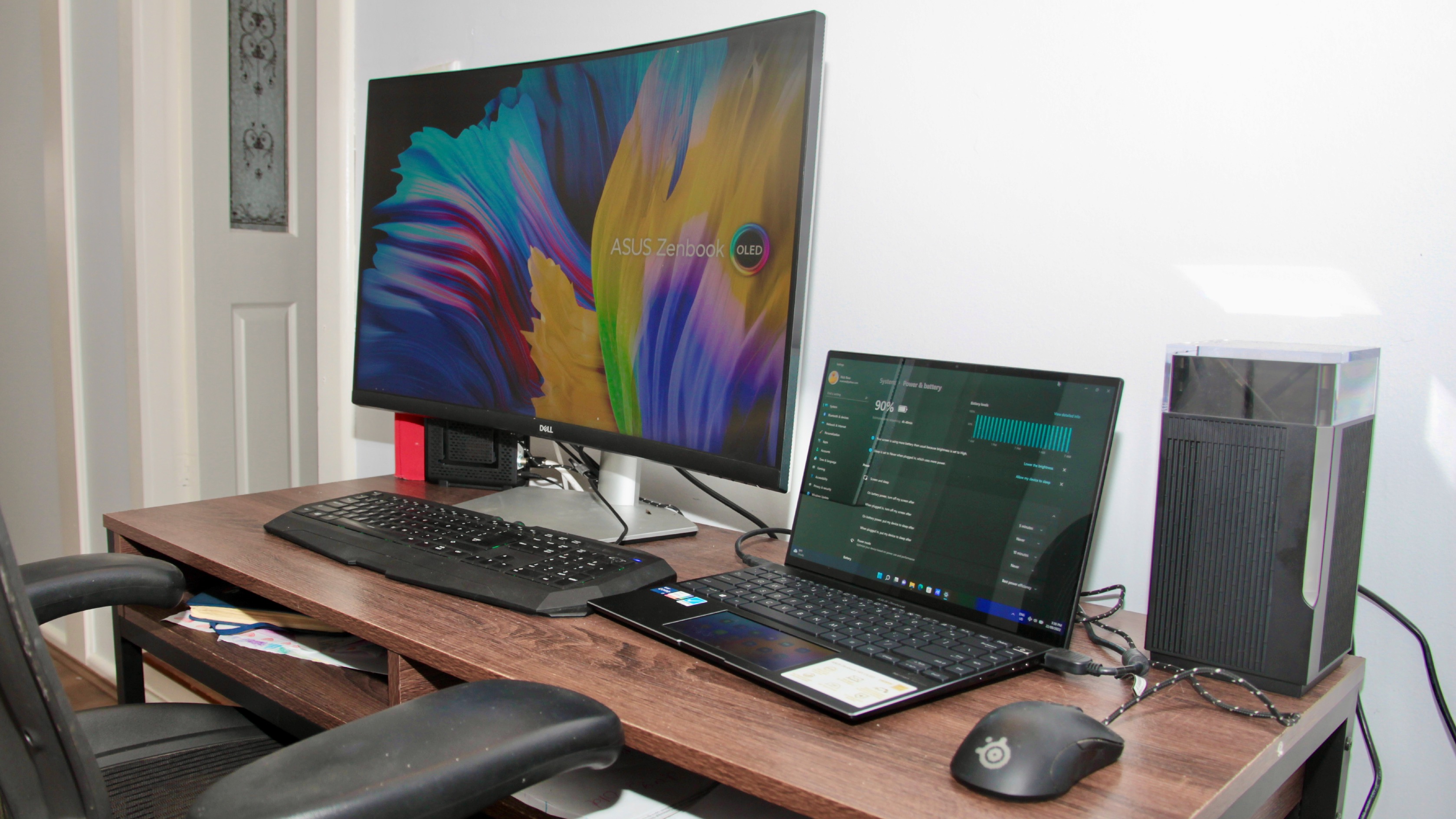
Asus ZenWiFi Pro XT12: Design & features
- Big and beautiful
- Simple setup
- Feels like a souped-up consumer router with SMB features
The Asus ZenWiFi Pro XT12 nodes are big, imposing towers, but we can’t help but be impressed with their industrial design. The main chassis simultaneously clothe the powerful internals in a stylish cladding that fits in well, both at home and in the office, while acting as a cooling tower that channels air and makes use of substantial heatsinks.
At the top, a glowing lamp changes colour depending on status while simultaneously masking 10 antennae that are angled for maximum performance and range. All LEDs can be turned off if desired.
Wireless connectivity: Wi-Fi 6 (802.11ax), tri-band 2.4GHz and 2 x 5GHz
Processor: Quad-core Broadcom 2GHz
Memory: 1GB
Ports: 2.5GbE WAN; 2.5GbE LAN, 2 x Gigabit Ethernet LAN
Dimensions (HxWxD): 175 x 320x 200mm
Setup is simple. You simply download the app, follow the basic network setup instructions and it works. Adding the second node simply requires it to be powered on. Too easy.
Each node has four Ethernet ports: 2.5GbE WAN, 2.5GbE LAN and dual 1GbE LAN. The later can be aggregated for a 2GbE connection which is great for attaching things like NAS boxes. Each node also has WPS and reset buttons, plus a power switch. Note that there are no USB ports.
The app is well featured and intuitive to use. It offers comprehensive details regarding network and client status, while an Insight tab offers advice on things like what’s available that’s not been activated and configuration boosts. There are the usual parental controls, plus an Advanced tab that enables the connection of other Asus AiMesh devices, QoS settings, the usual router options like Port Forwarding and voice assistant setup. You can also access the Instant Guard feature – this will channel the traffic from any public Wi-Fi hotspot you connect to through the XT12 so that its AiProtection scanning can check for malware and other cyber-nasties.
The app is useful but, with so many features, it’s worth going through a web browser to configure the more complex settings.
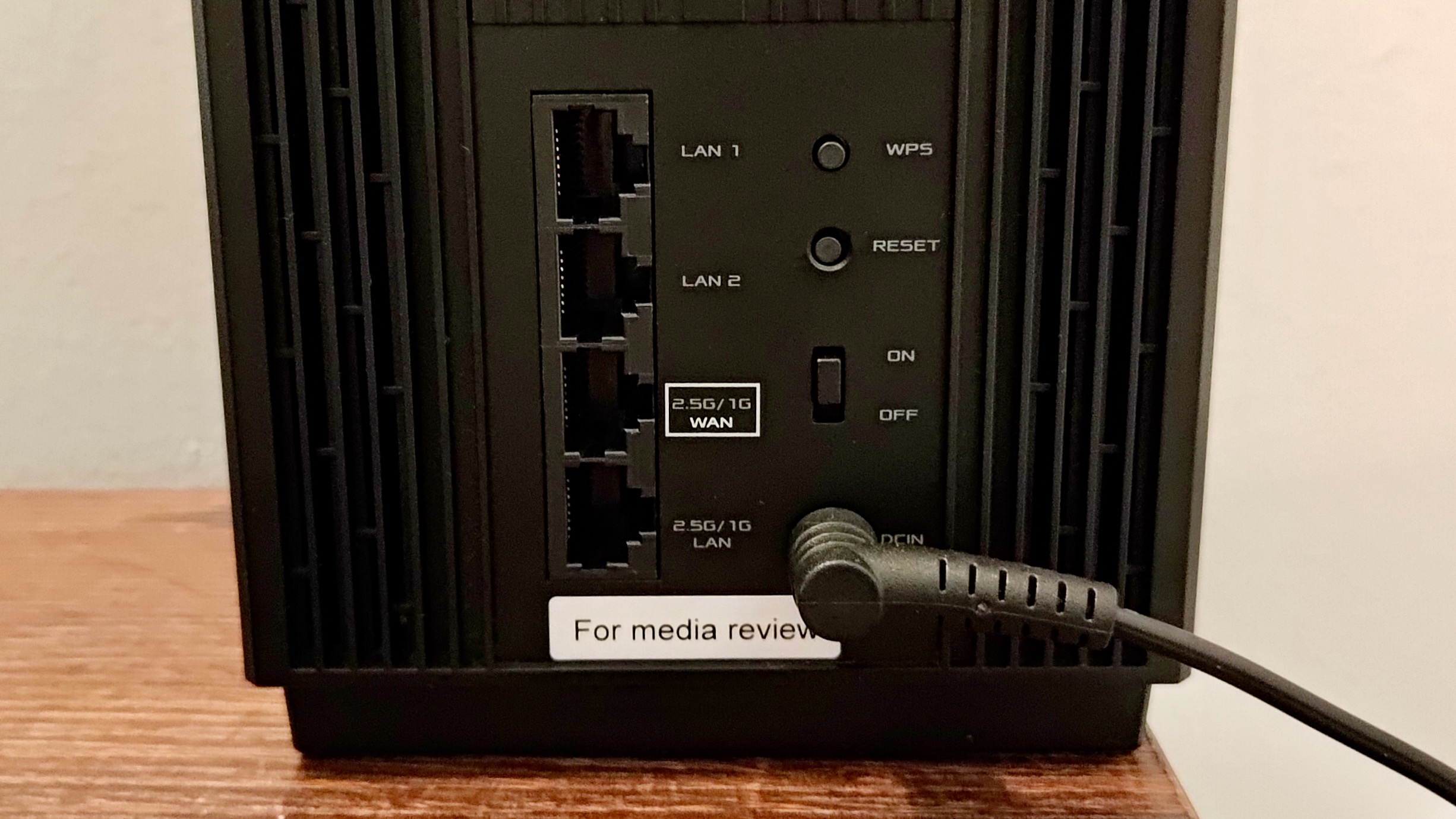
The AiProtection Pro service provides on-going security updates and real-time malware scanning for everything on the network, and it lasts for the life of the router. Beyond scanning your network for basic vulnerabilities, it can block malicious sites and prevent infected devices from connecting.
The Parental/User Controls enable off-time, scheduling and internet usage timer for device. It can also block various types of inappropriate content (note this is never 100% reliable), messenger services, P2P and file transfers, plus streaming and entertainment sites.
QoS settings are extensive and can ensure that anything from web conferencing, through video streaming to gaming can be prioritised on various devices.
Business and prosumers will like the idea of being able to use up to 12 SSIDs to group users and devices onto separate network segments – each with different levels of access. However, the access controls for these segments are very broad and nothing like (again) the Synology, which offers numerous, IoT-optimised, firewall and sharing configurations for each network. Nine of the SSID networks are essentially forms of guest networks.
SMBs will like the built-in VPN server.
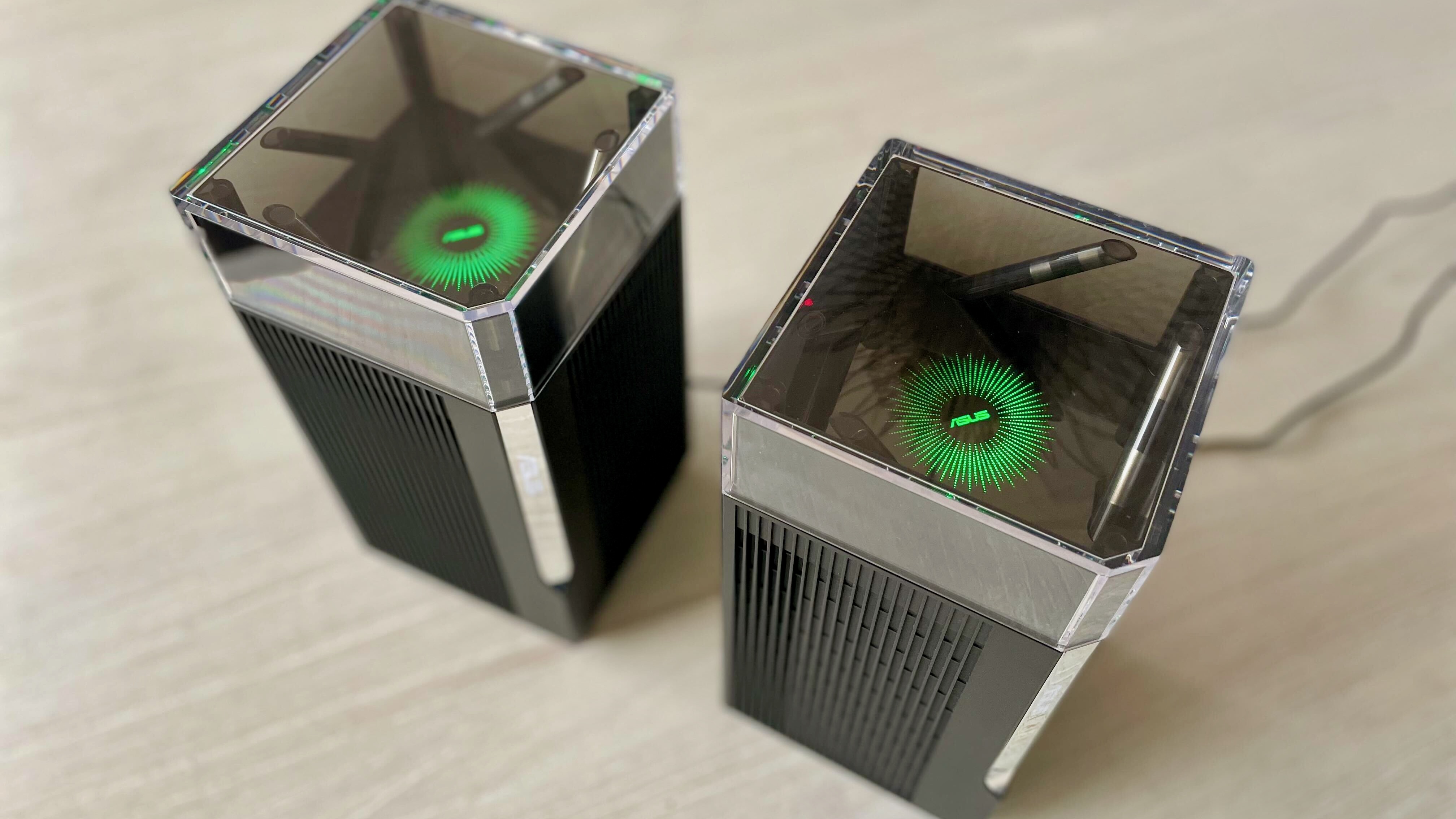
Everything is so well automated that even a novice can get a secure network up and running quickly and easily. Experienced network admins can get as down and dirty with intricate settings as they want.
Ultimately, the features on offer make the XT12 feel like a souped-up consumer router with SMB-friendly features, which is no bad thing. In some ways it’s like a consumer-friendly Draytek router – a brand that is all about no-nonsense SMB Wi-Fi without the bells, whistles or performance boosts found here. But we’ll have to wait and see whether that’s enough for SMBs to actually use it as the foundation of their core network though – that level of adoption tends to take years of trust to develop.
Of course, in the meantime, there’s the Synology RT6600ax always lurking nearby. It doesn’t so much have web browser "configuration" but a whole operating system replete with third-party apps. It offers all of the above features along with many additional ways to configure them.
Design score: 4.5/5
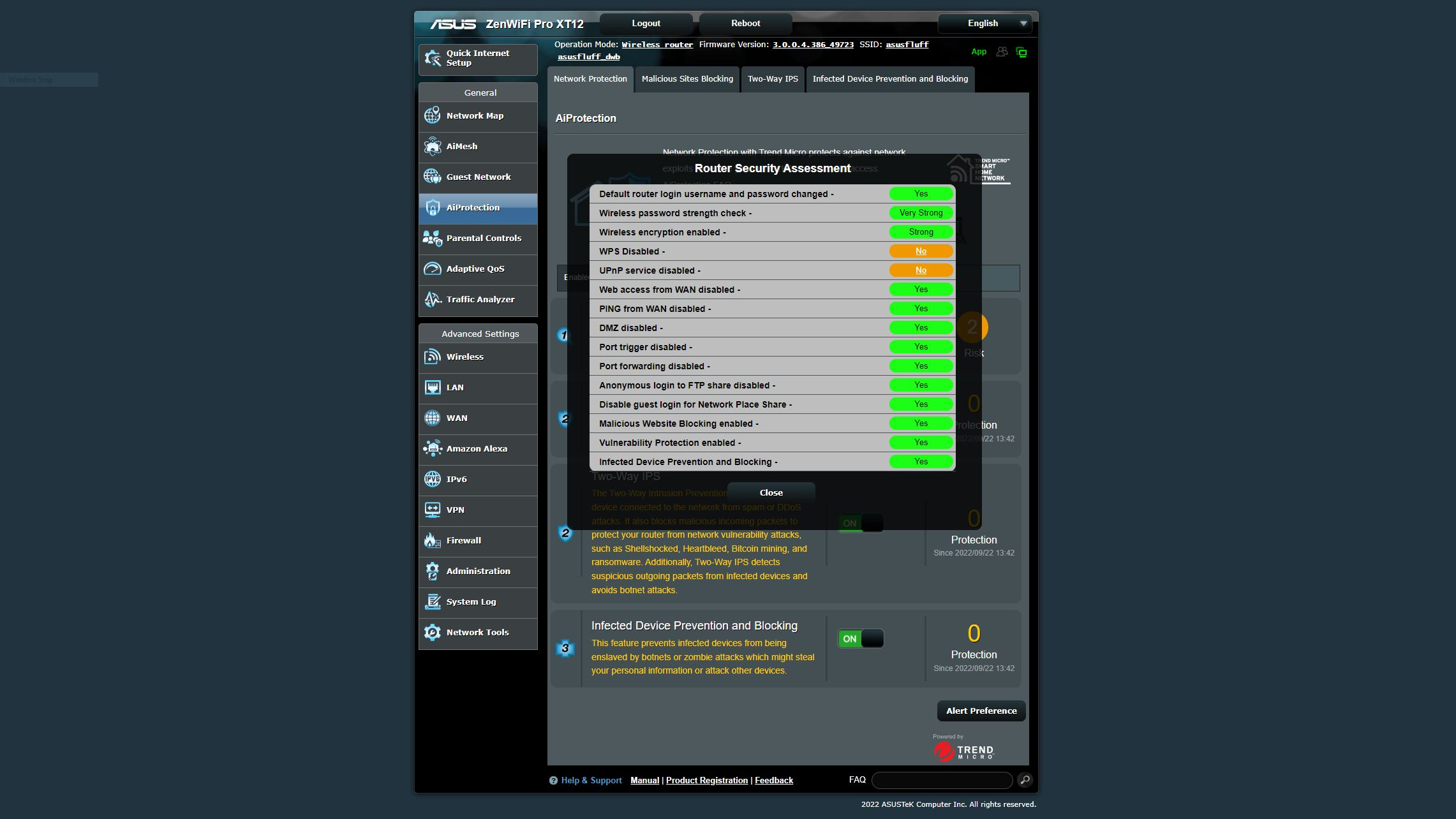
Asus ZenWiFi Pro XT12: Performance
- Fast, but not extraordinary peak performance
- Impressively low performance drop-off across the mesh
The Asus ZenWiFi Pro XT12 is a tri-band Wi-Fi 6 router with two 5GHz channels and a 2.4GHz channel that offer a combined, theoretical throughput of 11,000Mbps.
We ran our usual tests in a single-storey Sydney weatherboard cottage. This involved setting the first node up in the middle room, next to our modem and connected by Ethernet to our Synology NAS. The secondary node was two rooms away at the front of the house. We tested by downloading large files to a Wi-Fi 6 laptop next to both nodes and then 25m away, outside, in the back garden.
Up close it scored 627Mbps, which is fast but about 100Mbps slower than other top Wi-Fi 6 rivals. Next to the secondary node it scored 609Mbps – which represents only a 3% drop-off and the fastest speed we’ve ever seen from a test by a secondary node on a mesh!
Outside, at the bottom of the garden, however, the speed dropped to 46.6Mbps. This is still very respectable for a standalone router, but it’s beaten by mesh kits that have a third node at the back of the house. Of course, you can add a third node to the XT12 setup quite easily... but it will be very expensive!
Performance score: 5/5
Should I buy the Asus ZenWiFi Pro XT12?
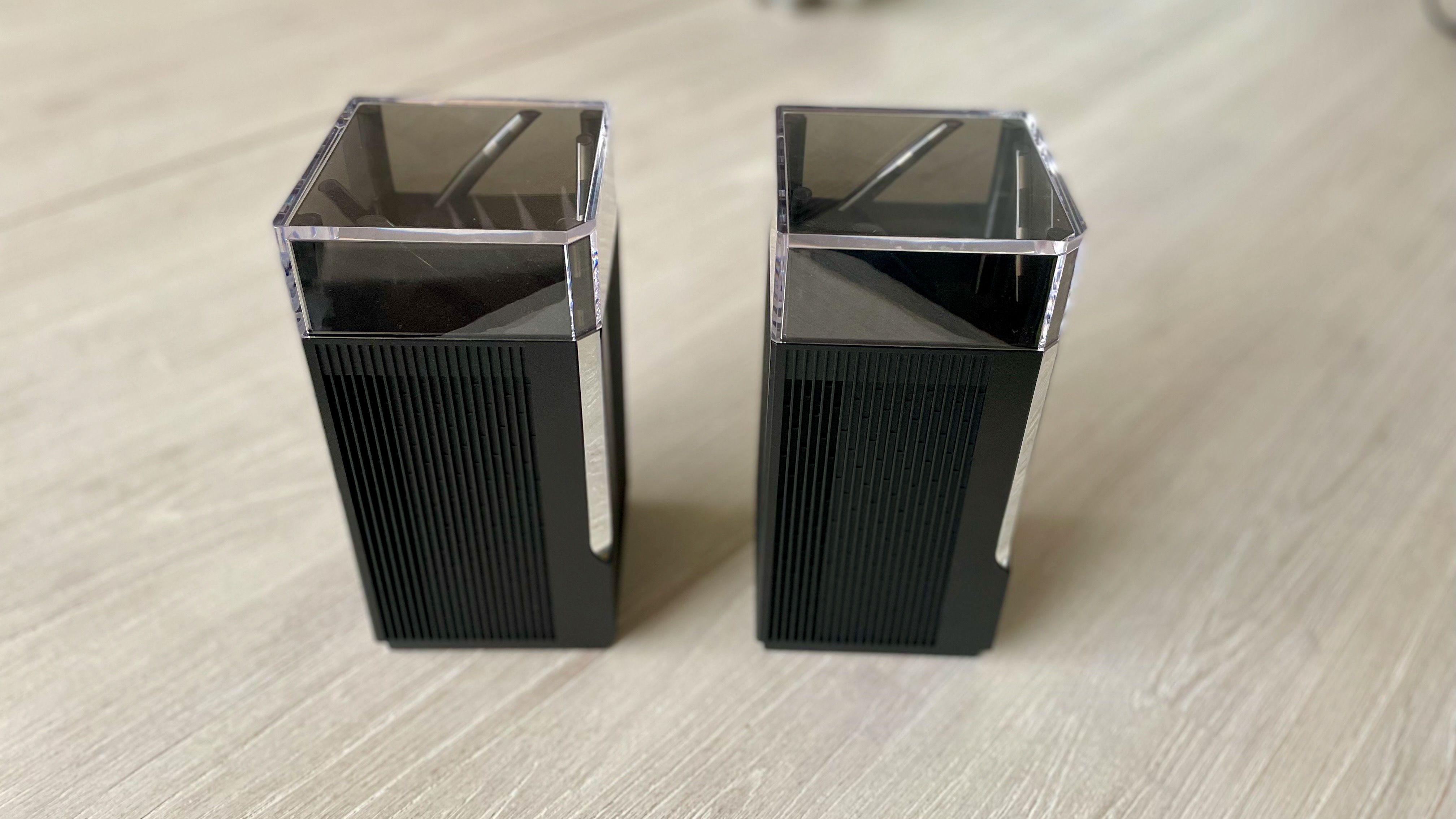
Buy it if...
Don't buy it if...
Also consider
[First reviewed October 2022]
0 comments:
Post a Comment